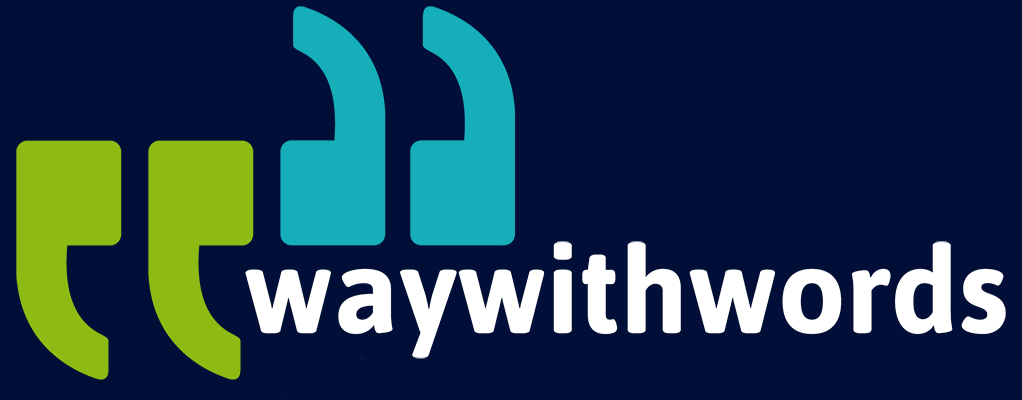How Can Transcription Help HR and Recruitment Professionals?
Supporting Sound Decision-Making Through Transcripts
In human resources and recruitment, decisions need to be accurate, consistent, and well-documented. From job interviews and onboarding to performance reviews, workplace investigations, or policy updates, HR professionals manage a complex web of communications and compliance responsibilities. Each conversation has the potential to affect someone’s career, the company culture, or legal liability. That’s where HR transcription services come in — transforming spoken words into reliable written records that are easy to reference, archive, and share.
When internal communications, interviews, or sensitive conversations are transcribed, there’s less chance of misunderstanding or disputes. The written word carries weight — and transcripts bring clarity, fairness, and consistency to decision-making. Whether you’re onboarding new hires, running training sessions, or handling performance-related matters, transcripts offer the peace of mind that nothing important is overlooked.
For HR and recruitment professionals, transcription isn’t just a convenient tool — it’s an investment in quality, compliance, and organisational trust.
Some common questions HR and recruitment professionals often ask about transcription services include:
- How can interview transcripts help reduce unconscious bias in hiring?
- What types of HR meetings or discussions should be documented in writing?
- Can transcription help with legal compliance during workplace disputes or hearings?
- Are there any tools that allow integration of transcripts with HR software systems?
- How can transcribed onboarding materials support diverse and inclusive workforces?
Let’s explore how HR transcription is transforming practices across hiring, training, compliance, internal communication, and documentation.
Recruitment Interview & HR Transcription Guidelines
1. Transcribing Job Interviews for Fair and Unbiased Hiring Decisions
Job interviews are often fast-moving and nuanced. While panel members do their best to capture notes during or after an interview, it’s impossible to record everything with full accuracy. Transcripts bridge that gap. They allow hiring teams to go back to what a candidate actually said, not just what they remember hearing.
Detailed interview transcripts help standardise comparisons across candidates. They capture examples, tone, key phrases, and technical explanations that are otherwise difficult to document. By using transcripts to support evaluations, HR teams reduce the risk of making decisions based on bias or selective recall.
This is particularly helpful in structured or panel interviews, where several candidates are measured against the same criteria. Transcripts can also assist in inclusive hiring efforts, helping panels to focus on facts and ability rather than personality impressions.
Key points:
- Supports equal opportunity hiring by eliminating unconscious bias.
- Provides a word-for-word record that complements evaluation forms.
- Useful for audits, quality assurance, and fair recruitment documentation.
- Enables follow-up discussions and post-interview analysis with clear references.
2. Documenting Employee Performance Reviews and Disciplinary Meetings
Performance reviews, improvement plans, and disciplinary conversations often touch on delicate and career-impacting topics. Miscommunication or unclear phrasing can create friction — or worse, legal complications. That’s why it’s wise to have an accurate transcript of what was discussed and agreed upon.
When transcriptions are used for one-on-one meetings, they act as a neutral record. Employees and managers alike benefit from knowing there’s a shared version of events that can be revisited later. Transcripts are particularly useful when follow-ups are required, or when HR needs to assess whether agreed actions were carried out.
For disciplinary hearings, a transcript can form part of the formal documentation trail. This helps ensure compliance with internal HR protocols and local employment laws.
Key points:
- Reduces disputes about what was said during sensitive meetings.
- Creates a reliable reference for follow-up actions or improvement tracking.
- Offers protection for both the employee and the employer.
- Can be reviewed and signed as part of the HR records.
3. Creating Accurate Records of Training Sessions and Company Policies
Company policies are only useful when everyone understands them. Similarly, training sessions deliver the best value when their key points are retained and applied. Unfortunately, people don’t always remember everything they hear — especially in long or information-heavy sessions.
That’s where transcription helps. By converting spoken sessions into written material, HR departments can distribute transcripts as reference documents, summaries, or integrated content in learning management systems. It also enables staff who missed sessions due to illness or scheduling conflicts to catch up effectively.
Training transcripts are also valuable when updating materials. HR teams can track changes in policies over time, or compare the messaging delivered in different sessions to ensure consistency.
Key points:
- Enhances knowledge retention and reference access for employees.
- Aids remote teams or absent employees in staying informed.
- Facilitates training audits, updates, and compliance tracking.
- Encourages employee engagement by reducing note-taking distractions.

4. Ensuring Legal Compliance with Workplace Dispute Transcripts
Disputes are a reality of workplace life. From complaints and investigations to mediation and tribunal hearings, HR teams need accurate records of what’s been said and decided. Verbal summaries or handwritten notes can leave too much room for interpretation or disagreement.
Transcripts eliminate the guesswork. They show precisely who said what and when. This level of detail is critical in legal settings, where outcomes depend on clarity and evidence. HR can also use transcripts to demonstrate that procedures were followed correctly and fairly.
In highly regulated sectors or unionised environments, having full transcripts of grievance or disciplinary hearings can protect the organisation from litigation or reputational harm.
Key points:
- Helps meet legal obligations under employment and labour laws.
- Prevents misrepresentation of facts or intent in disputes.
- Can be submitted as official evidence in legal or arbitration proceedings.
- Reassures all parties that the process is handled impartially.
5. Improving Accessibility with Transcribed Onboarding Materials
Not every new hire processes information in the same way. Some may struggle with lengthy videos or audio-based inductions. Others might have hearing impairments or require translations. By offering onboarding content in transcribed form, companies can cater to diverse learning styles and backgrounds.
Transcripts help new employees engage more deeply with the material, take ownership of their learning, and revisit complex topics whenever needed. It’s also a more inclusive approach, showing the company cares about accessibility and clarity.
Some companies go a step further by turning transcripts into multilingual guides, simplified summaries, or integrated e-learning modules. Whatever the format, the core benefit remains: giving people more than one way to understand their workplace.
Key points:
- Supports equity and accessibility in the onboarding process.
- Increases employee confidence in understanding policies and culture.
- Encourages self-paced learning and revision.
- Demonstrates an inclusive, forward-thinking company ethos.
6. Streamlining Recruitment Documentation for Audit and Reporting
Recruitment involves a chain of documentation — job posts, interviews, assessments, approvals, and offers. Managing all this can be time-consuming, especially if it’s spread across emails, notebooks, and different platforms.
By transcribing recruitment interactions, HR teams gain centralised, searchable records that support auditing, reporting, and compliance. This includes everything from screening calls to final salary discussions. Having transcripts can also help recruiters identify patterns or trends in their hiring decisions, like how long it takes to fill roles or which questions elicit the best insights.
In high-volume recruitment or agency settings, transcript databases are even more valuable. They improve communication across teams and make sure everyone is on the same page.
Key points:
- Reduces risk of missing or inconsistent records.
- Makes candidate assessments and justifications easier to document.
- Supports strategic decision-making and HR reporting.
- Enables better candidate management and stakeholder alignment.
7. Supporting HR Investigations with Verifiable Records
Investigations into workplace misconduct, safety concerns, or whistleblower claims must be handled with care and integrity. One of the best ways to ensure fairness is to document everything thoroughly — and transcription offers a simple but powerful method.
From witness interviews to policy reviews, transcripts bring transparency to the process. They protect the rights of those involved, uphold procedural fairness, and offer a clear record that can be reviewed by legal counsel or external bodies if needed. Even when outcomes are handled internally, knowing there’s a comprehensive record adds credibility and helps HR teams defend their processes.
Key points:
- Ensures accuracy in investigation reporting.
- Reinforces accountability in HR processes.
- Offers defensible documentation in contentious or complex cases.
- Helps build employee trust in internal systems.
8. Saving Time for HR and Recruitment Teams
Time is one of HR’s most precious resources. Interviewing, meeting, training, onboarding — it all adds up. Transcription helps teams save hours otherwise spent manually summarising or writing notes.
By outsourcing or automating transcription, HR can redeploy those hours into work that demands their judgment, empathy, or strategy. It also means teams don’t have to rely on memory or inconsistent shorthand.
For recruitment professionals juggling dozens of candidate conversations a week, transcripts offer a clear, timestamped history that eliminates repeated questions or unnecessary back-and-forth.
Key points:
- Speeds up HR and recruitment workflows.
- Frees up staff to focus on higher-value work.
- Reduces repetitive tasks like re-listening to recordings.
- Supports efficient collaboration and delegation within teams.

9. Enhancing Transparency in Internal Communication
Internal communication — from leadership updates to diversity initiatives — plays a crucial role in shaping culture. But not everyone absorbs information through spoken channels. Some employees might miss live sessions, or simply prefer reading.
By transcribing announcements, town halls, or feedback sessions, companies demonstrate a commitment to transparency and inclusivity. These transcripts can be published internally, emailed, or added to intranet pages. It’s also a practical way to create an internal archive that helps with knowledge transfer and onboarding, especially in hybrid or distributed workplaces.
Key points:
- Makes key messages accessible to everyone.
- Reinforces company values around openness and clarity.
- Helps prevent communication gaps across departments or regions.
- Preserves institutional knowledge for future reference.
10. Strengthening Employer Branding and Candidate Experience
First impressions matter — and the hiring experience is often a candidate’s first real contact with your organisation. When that experience is thoughtful, professional, and respectful, it reflects well on your brand.
Using transcripts to record candidate conversations signals that you’re serious about accuracy, transparency, and fairness. It can also be used to deliver constructive feedback to applicants, especially in final-round interviews.
Recruiters and HR teams can also use transcripts to evaluate how hiring managers communicate with candidates, and adjust accordingly to improve the candidate journey.
Key points:
- Reinforces professionalism and consistency in hiring.
- Builds candidate trust and encourages future engagement.
- Helps recruitment agencies demonstrate value to clients.
- Enhances the company’s image as a structured and ethical employer.
Key Tips for Using Transcription in HR and Recruitment
- Choose secure transcription providers – Always ensure your provider offers strong data privacy protections and complies with relevant regulations.
- Balance automation with human oversight – Automated transcription can be fast, but always use human proofing for final accuracy.
- Integrate transcripts into your HRIS or ATS systems – Seamless integration improves usability and long-term tracking.
- Use clear naming conventions and metadata – Makes documents easier to find later.
- Offer transcription as a standard process, not an afterthought – Normalising it in HR workflows builds consistency.
Why Transcription is a Strategic Advantage for HR
HR transcription is more than a convenience — it’s a strategic tool for clarity, fairness, and efficiency. From candidate interviews and training sessions to performance reviews and internal investigations, having accurate transcripts helps HR professionals make better decisions and protect both people and the business.
Reliable transcription helps eliminate guesswork, build trust, and uphold standards. It streamlines workflows, supports compliance, and contributes to a culture of inclusion and respect. As HR professionals adapt to new challenges, one constant remains: communication matters. And how we record it matters even more.
If your HR team hasn’t yet embedded transcription into your daily processes, now’s the time. Start small, choose key touchpoints like interviews and policy training, and scale up from there. Once transcription becomes routine, the benefits compound — giving you confidence in your documentation, decisions, and the future.
Further HR Transcription Resources
Human Resource Management (Wikipedia) – Provides an overview of HR management, including documentation requirements and legal considerations in the workplace.
Way With Words: Transcription Services – Way With Words employs advanced technology and highly skilled transcribers to overcome common challenges in transcription, ensuring that clients receive accurate and reliable transcripts regardless of the complexity of their audio files.
